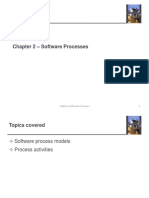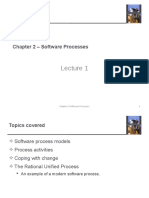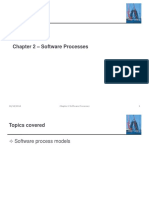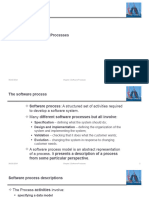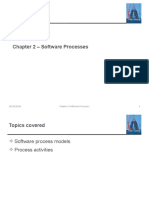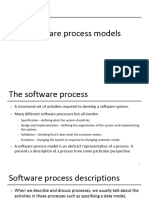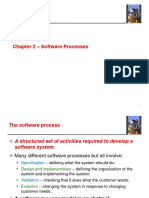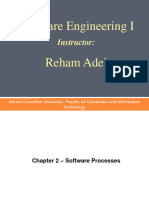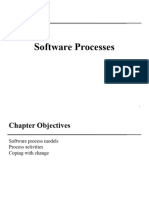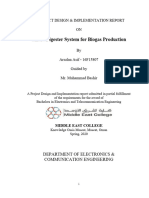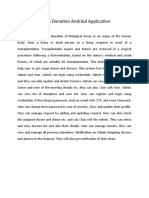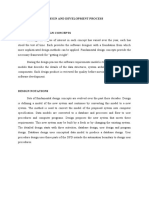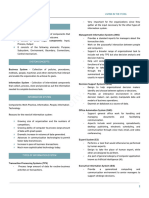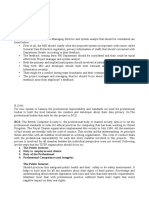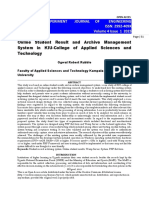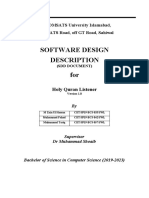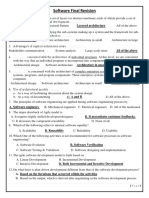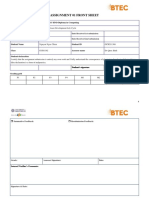0% found this document useful (0 votes)
10 views21 pagesLecture 02
The document summarizes key aspects of software processes and process models. It discusses that a software process is a structured set of activities to develop software, including specification, design, implementation, validation, and evolution. It also describes software process models as abstract representations of processes. Common process models discussed are prescriptive models like waterfall and incremental development, as well as agile and evolutionary models.
Uploaded by
Ziad nafeaCopyright
© © All Rights Reserved
We take content rights seriously. If you suspect this is your content, claim it here.
Available Formats
Download as PDF, TXT or read online on Scribd
0% found this document useful (0 votes)
10 views21 pagesLecture 02
The document summarizes key aspects of software processes and process models. It discusses that a software process is a structured set of activities to develop software, including specification, design, implementation, validation, and evolution. It also describes software process models as abstract representations of processes. Common process models discussed are prescriptive models like waterfall and incremental development, as well as agile and evolutionary models.
Uploaded by
Ziad nafeaCopyright
© © All Rights Reserved
We take content rights seriously. If you suspect this is your content, claim it here.
Available Formats
Download as PDF, TXT or read online on Scribd
/ 21


